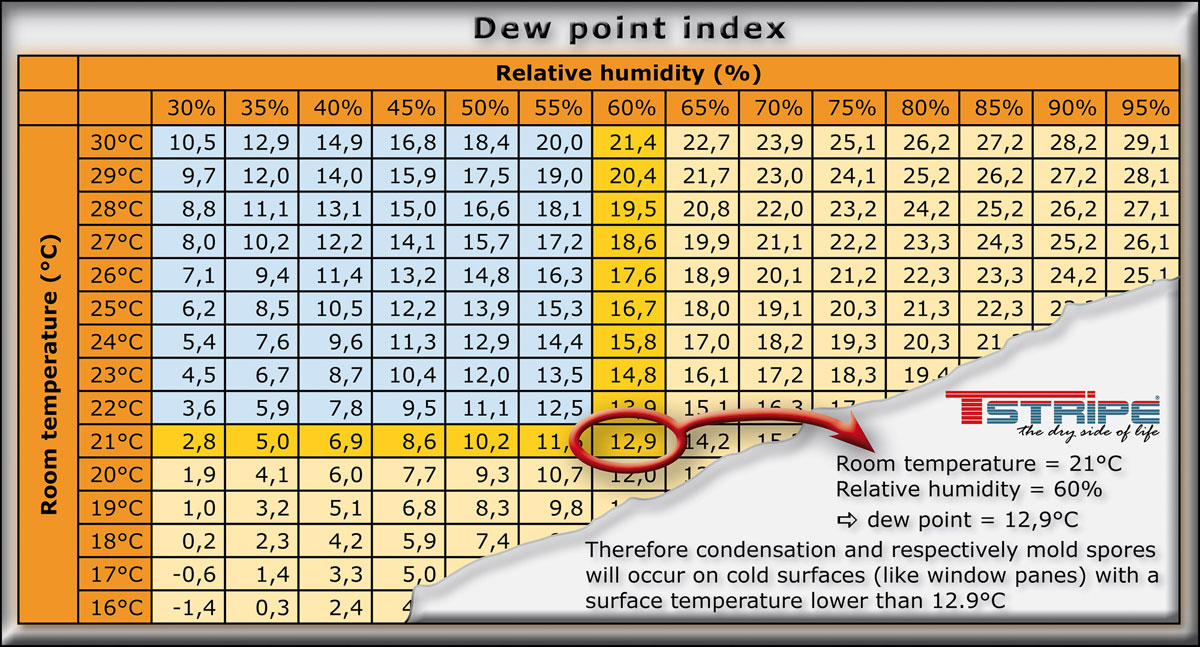The point at which air-cooled down enough for condensation to occur is called the dew point.
Air cannot absorb enough vapor anymore, the vapors begin to condense on cold surfaces.
When it comes to windows condensation is not only an optical problem, it can quickly develop into a serious health hazard once mold starts growing over time.
People, who have to deal with a lot of condensation on their windows, therefore, ask themselves the same question: How can I manipulate the dew point in my rooms and keep my windows dry? Two factors decide the dew point; relative humidity and room temperature. The higher a room’s temperature and the lower the humidity, the higher the dew point will be. And the higher the dew point, the lower the chance of condensation.
The solution: Heating elements for windows
T-STRIPE works based on this physical principle, it heats up the edges of the window pane (where most of the condensation occurs) and raises the temperature beyond the dew point to effectively prevent any condensation from happening.
To know about the dew point is absolutely vital when it comes to knowing where and when condensation could occur. Calculating the dew point is easy if you know temperature and humidity:

Dew point index: The point at which air-cooled down enough for condensation to occur is called the dew point.



